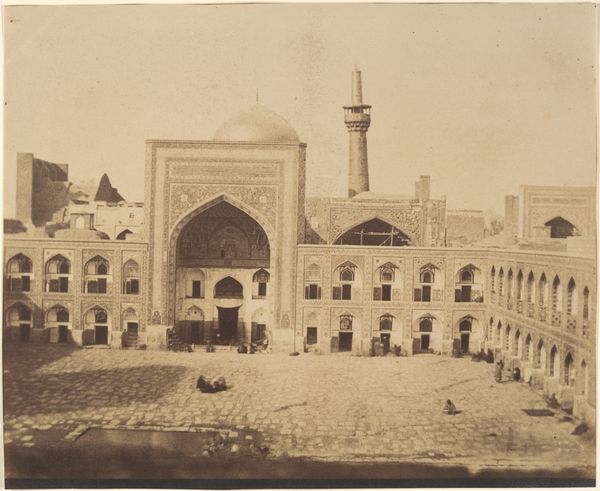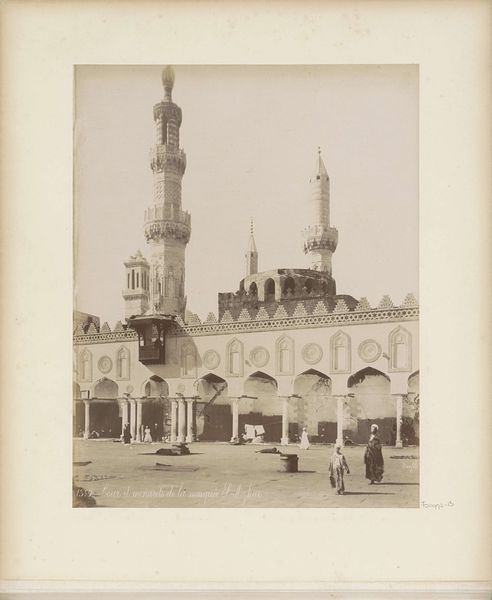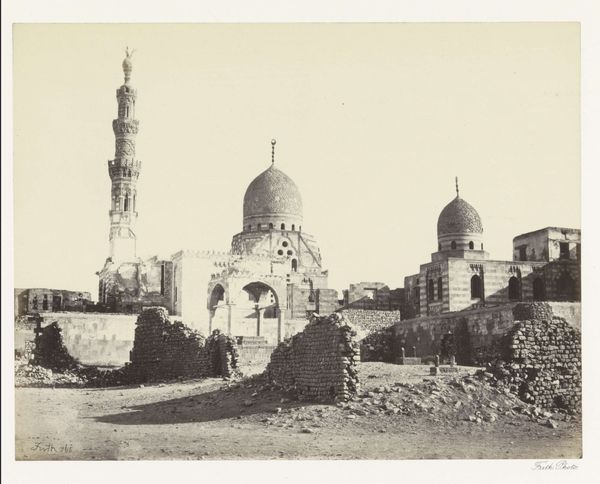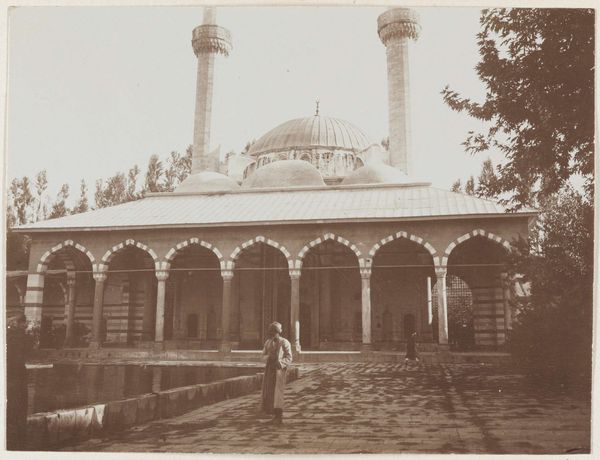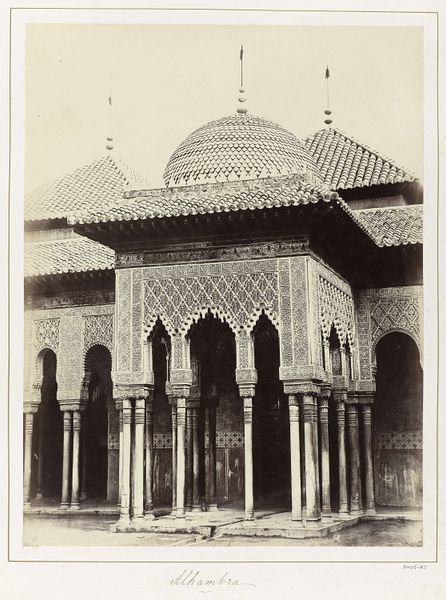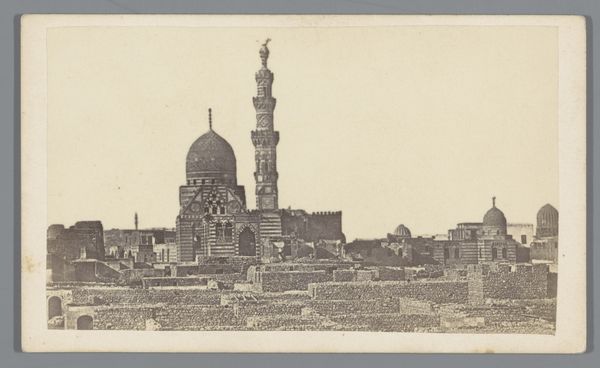
Exterieur van de Fatima Masumehschrijn (Hazrat-e Masumeh) in Qom c. 1880 - 1895
0:00
0:00
print, photography, architecture
# print
#
landscape
#
photography
#
historical photography
#
19th century
#
islamic-art
#
architecture
Dimensions: height mm, width mm
Copyright: Rijks Museum: Open Domain
Curator: Good morning. I'm seeing delicate spires against an almost ethereal sky. It has an overall effect like an illustration from a fairy tale, although I imagine the reality was somewhat different. What is this beautiful building? Editor: We're looking at a late 19th-century photograph by Antoine Sevruguin, titled "Exterieur van de Fatima Masumehschrijn (Hazrat-e Masumeh) in Qom". Curator: Fatima Masumehschrijn... So, we’re seeing a shrine, a very imposing one at that. There’s a quiet grandeur here; everything seems carefully placed, even in a photograph that’s over a century old. Tell me a bit about it. Editor: Certainly. This print showcases the exterior of a significant Shia shrine located in Qom, Iran. It's not just a place of worship; it's a symbol of faith and a powerful architectural statement. Curator: The framing really emphasizes the architectural precision, but I wonder about the society outside. Were there political messages or intentions within such photographs during that time? Editor: Absolutely. Sevruguin operated during a period of immense social and political change in Persia. Photography became a tool for both documentation and, subtly, for negotiation between tradition and modernity. Images like this circulated among elites, and Western audiences, shaping perceptions of Persian society. Curator: It's amazing how photography can both freeze a moment and still convey movement – societal and spiritual. Those minarets must have appeared majestic! The amount of intricate detail on them alone is astounding. Editor: It's worth considering the role of museums and their evolving relationship with the display of cultural heritage like this. Photography enabled cultural exchange, but also power dynamics between colonizer and colonized, or between different groups within Persia. This photographic image allowed for greater access to it, or, maybe, imposed its own understanding of the Shrine onto a viewer far away from the holy location. Curator: I never considered the imposition aspect of viewing things out of context. Seeing the world through a lens not your own. I was initially drawn by its artistic rendering, a quiet visual pause in our often too fast lives. Thanks for bringing historical and socio-political nuances to the fore. Editor: Thank you! Considering these complexities enriches our appreciation, highlighting the multifaceted role that images like this play in society even now.
Comments
No comments
Be the first to comment and join the conversation on the ultimate creative platform.

